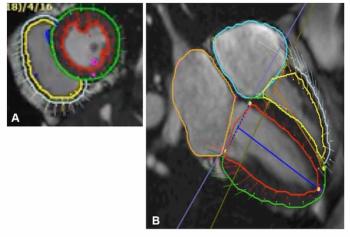
Many incidental findings on cardiac CT prove important
A high number of extracardiac findings in patients who undergo CT scans are clinically important, according to a study of 963 patients presented at the North American Society for Cardiac Imaging meeting in Las Vegas this week.
A high number of extracardiac findings in patients who undergo CT scans are clinically important, according to a study of 963 patients presented at the North American Society for Cardiac Imaging meeting in Las Vegas this week.
Florian Mayer, a medical student, and colleagues at the Medical University of South Carolina in Charleston retrospectively reviewed records of 963 patients evaluated with cardiac CT.
Indications for the exam were calcium scoring, coronary CTA, pulmonary vein study following radiofrequency ablation, and evaluation of bypass grafts. Researchers divided incidental findings into four categories:
1. Requring urgent follow-up exams;
2. Requiring immediate clinical evaluation (emergent);
3. Follow-up important but not urgent; and
4. No specific follow-up needed.
Of the total, investigators identified extracardiac findings in 291 patients. Of these, 190 patients had findings in groups 1 through 3. About 14 patients had findings of an urgent or emergent nature (groups 1 and 2).
Breaking down the results by clinical category, the investigators found that:
- Of 240 patients who received a calcium score, 27 had extracardiac findings and 0.8% of these were urgent or emergent;
- Of 425 patients evaluated with CTA, 156 patients had incidental findings, of which 6.8% were urgent or emergent;
- Of the 176 patients who underwent pulmonary vein evaluation, 54 had incidental findings, of which 1.7% were urgent or emergent; and
- Of 122 patients whose bypass grafts were evaluated, 54 had incidental findings, of which 4.1% were urgent or emergent findings.
No significant findings correlated with the indication for heart disease, Mayer said.
Examples of findings requiring urgent follow-up included lesions with malignant features, pulmonary nodules greater than 1 cm, and aortic aneurysms. One woman with a history of breast cancer 10 years prior presented to the ER with chest pain. Her scan revealed a large substernum nodule and smaller metastases.
Findings requiring immediate clinical evaluation included pulmonary embolism, pneumonia and acute dissection. A 32-year-old male who presented to the ER with chest pain did not show coronary artery disease. A closer look in full field of view lung windows revealed pneumonia.
Important but not urgent findings included small pulmonary nodules (less than 1 cm), interstitial lung disease, pleural effusion, and indeterminate liver or adrenal lesions.
Emphysema, benign liver or adrenal lesions, and subsegmental atelectasis findings fell into the category of no specific follow-up needed.
Incidental findings occur more frequently in groups undergoing contrast-enhanced studies compared to calcium scoring, but the finding was not statistically significant.
Newsletter
Stay at the forefront of radiology with the Diagnostic Imaging newsletter, delivering the latest news, clinical insights, and imaging advancements for today’s radiologists.


























